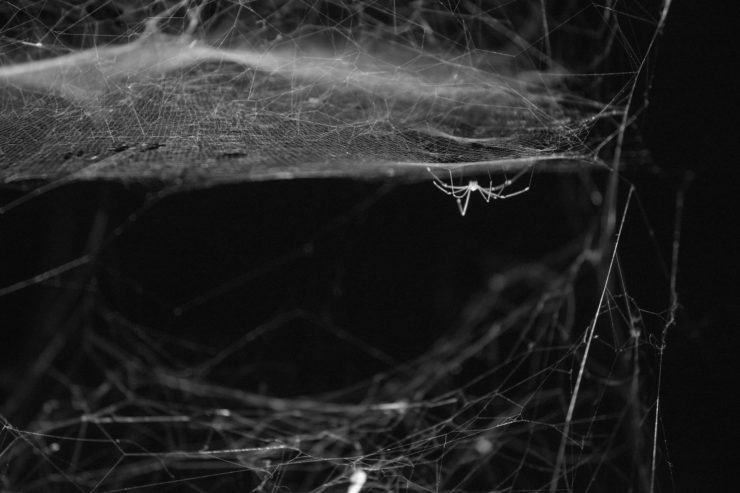Seminar Blogs
“Environmental Intelligence” – Chris Julien
Data Echoes
What can our hearing teach us about the entanglements of intelligence with our physical bodies, and, by extension, about the intelligence of other systems – living and algorithmic? Dr. Thomas Hermann and his Ambient intelligence Group work with data sonifications to access human capacities in unexpected yet familiar ways. In a world where the visual is our preferred medium of understanding, foregrounding auditive, ambient senses of hearing helps us to understand ideas about enactive cognotion, where intelligence becomes a quality that is co-emergent with our environment. Working in the Center of Excellence in Cognitive Interaction Technology, Hermann and his team apply multi-sensoral interfaces in ways that are attuned to both our evolutionary human sensorium, as to technically mediated information sources. exploring different ways engaging our sense of sound while demonstrating how it extends in finely grained temporal and spectral spaces. It allows us to distinguish in lightning speed atypical patterns in data that would be visually hard to discern or convey.
Environmental Intelligence
Hermann’s experimental practice points to an understanding of embodied and enactive cognition that is not limited to humans. Recently, New Scientist reported on recent insights into spider intelligence:
“some arachnids possess hidden cognitive abilities rivalling those of mammals and birds, including foresight and planning, complex learning and even the capacity to be surprised. Stranger still, the delicate silk threads they spin out behind them, so easily swept up by a feather duster, help them to sense and remember their world. Indeed, spiders’ silk is so important to their cognitive abilities that some scientists believe it should be considered part of their mind” (Robson 2020, n.p.).
Exploring such particular arrangements of sensory-cognitive systems allows us grasp how intelligence extends far beyond the classical Cartesian subject into variously constituted environmental intelligence.
In on-air, Tomas Saraceno guides us into the world of spider-web entanglements. With customised vibration sensing and meticulous 3D modelling of webs, his work opens the possibility of thinking-with the spider. This thinking-with takes the shape of co-created habitats, algorithmically sonified webs, and even gives rise to speculative modes of thermal flight, suggesting the possibility of an “emerging ecosystem that hosts a choreography of multiple voices belonging to human and non-human universes” (Saraceno 2018, n.p.).
Such art-science explorations can help us understand our own ‘intelligent’ capacities are not bound by our individual selves, but are complex evolutionary webbings of agency entangled with our environments. Such a definition of intelligence gives us another look at forests, crowds of people and artificial intelligence systems alike. In particular, environmental intelligence allows us to understand “intelligence attributed to living systems larger than individual entities. Since rivers, forests, oceans and clouds could be recognised as hyperobjects or even legal persons, we can also identify their capacity to act according to their agencies.” (Miha Tursic, 2019)
Probability Parrots
As I am writing this blog, a Guardian article is published noting: ‘Study finds parrots weigh up probabilities to make decisions’ (based on a research in ‘Nature Communications‘) (Davis and Roy 2020, n.p.). This study of an entirely different life-form allows us to employ an ‘environmental critique’ of Artificial Intelligence, where the persistent ‘black box’ myth that evacuates the complex human/non-human practices and proclivities that allow these systems to function.
What’s more, the probabilistic prowess of the parrots remind us that the predictive qualities of AI actually aren’t that big a deal, that humans as other animals actually have ‘AI’ themselves, as over time we are perfectly capable to take in complex information and gauge probabilities on an intuitive level:
“There is good evidence that human intelligence is domain-general, meaning that humans can combine information of different types – social, physical [and] numerical – to make a single judgment or decision. It wasn’t previously clear if other animals, besides great apes did this – or were restricted to using a single source of information at a time, meaning they are only good at solving one sort of problem” (Bastos, quoted in Davis and Roy 2020, n.p.).
The ‘algorithmic capacity’ of humans is revealed in parrots, yet as with our fellow critters, our intelligence cannot be dis-entangled from our embodied cognitions: “’Kea seem to be able to integrate several [types of] information and that suggests that they are not ‘clever’ only in one specific aspect but also in others,’ she said. ‘That might suggest that intelligence may have evolved as one package, not as several smaller packages’”(Bastos, quoted in Davis and Roy 2020, n.p.).
Ambient and environmental intelligences open the doors to a more nuanced, rich and extended notion of intelligence, and one that is timely in its countering of fantastic scenario’s surrounding AI technologies. As Karen Barad would point out, our intelligence is ‘intra-active’; bringing the world into being in entangled and embodied manners that extend across environments, species and cultures.
References
- Barad, Karen. 2007. Meeting the Universe Halfway: Quantum Physics and the Entanglement of Matter and Meaning. Durham & London: Duke University Press.
- Davis, Nicola and Roy, Ainge Eleonor. 2020. “Study finds parrots weigh up probabilities to make decisions”. The Guardian, 3 March 2020.
- Robson, David. 2020. “Spiders think with their webs, challenging our ideas of intelligence” . New Scientist, 5 February 2020. https://www.newscientist.com/article/mg24532680-900-spiders-think-with-their-webs-challenging-our-ideas-of-intelligence.
- Saraceno, Thomas. 2018. “ON AIR”. Accessed 5 March, 2020. https://studiotomassaraceno.org/on-air/.
- Tursic, Miha. 2019. “Symposium: Environmental Intelligence”. Accessed 5 March, 2020. https://waag.org/nl/event/symposium-environmental-intelligence.
Featured Image: Murdo MacLeod/The Guardian




